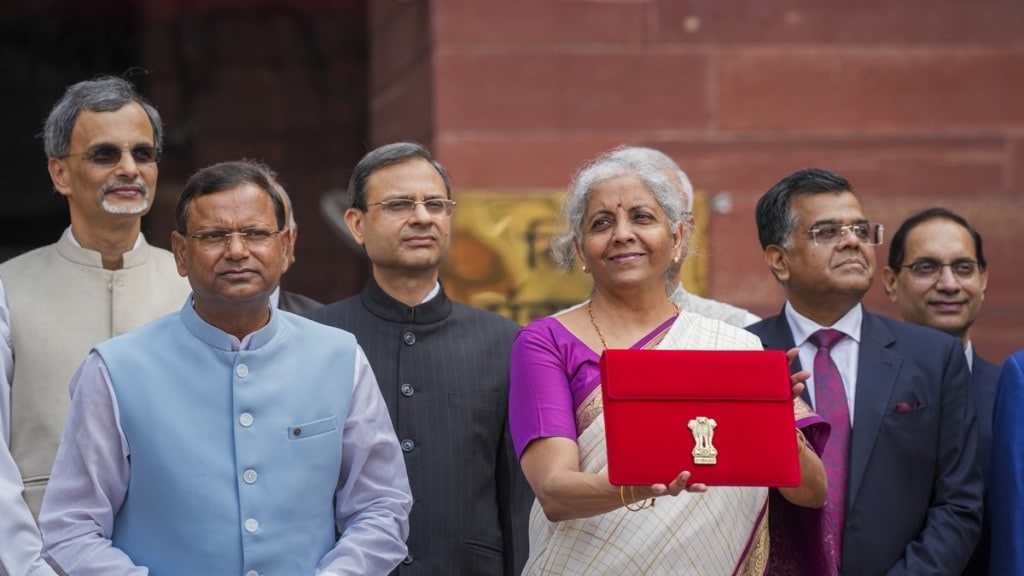Finance minister Nirmala Sitharaman deserves full marks for a Budget that continues on the path of fiscal consolidation while spending a little more to boost demand. The unambiguous focus on jobs, skilling, small and medium units, and the rural economy is probably the result of lessons learnt from the fractured election verdict. The Budget clearly reflects the changed political dynamics, including the government’s reliance on coalition partners, and the realisation that unemployment and rural distress played a role in the electoral setback. It’s a blessing in disguise as the Budget measures suggest a shift to a more equitable growth and are aimed at addressing unemployment and supporting small enterprises. These include an increase in social welfare spending, helped by a bigger dividend transfer from the Reserve Bank of India, and relief for both small taxpayers and investors.
At Rs 48.2 trillion, the Budget is not expansionary; the surplus has been split between additional revenue expenditure of Rs 55,000 crore and the consolidation of the fiscal deficit to 4.9% of the gross domestic product. The lower net market borrowings of Rs 11.6 trillion will help keep interest rates in check. Importantly, the intent to reduce government debt over the years should soon earn India a rating upgrade. Indeed, it’s a very conservative Budget with gross tax revenues tipped to grow by 10.8%, at an assumed buoyancy of only 1.1 compared with 1.4 last year, and the nominal GDP at 10.5%. A 70 basis point contraction in the deficit might not impart a negative fiscal impulse because the quality of the expenditure is good with more capex, and also because the RBI dividend is coming in more as a transfer from overseas rather than any local financial repression.
The unchanged capex outlay of `11.1 trillion should drive home the message to the private sector that it is time to start investing meaningfully. The increase in the allocation of interest-free loans to state governments by 15% will help boost infra spends, while the `10 trillion for affordable housing will help boost construction activity. The government is clearly looking to help small enterprises with credit and to create jobs with an outlay of `2 trillion on five new schemes. Several skilling, apprenticeships, and training programmes have been talked of, targetted at 40 million youth. These are good ideas and the private sector must do its bit. There are sops such as cash transfers for first-time formal workers and incentives for Employees Provident Fund Organisation contributions.
The government will also extend support to small entrepreneurs with higher Mudra loans of `20 lakh to those eligible. Some measures sound imprudent — asking state-owned lenders to assess credit risks for micro, small, and medium enterprises rather than rely on external agencies, covering units without a formal accounting system — but banks must support these units in times of stress. Since the government is providing a credit guarantee, they cannot demur. There is also an agenda to push manufacturing with the setting up of a dozen industrial parks. The FM has spoken of simplifying foreign direct investment norms, which should be accompanied by easier labour norms and regulatory certainty.
There is mention of more public private partnerships — and the promise of viability gap funding to promote projects. To boost local manufacturing, the government has cut import duties on a range of goods such as precious metals and copper. However, protectionism through higher tariffs, such as those on select telecom machinery — cannot make Indian firms competitive. The decision to abolish the angel tax is a good one because the risk of losing out on big investments, in a bid to prevent a few cases of deliberate undervaluation, is simply not worth it. Moreover, doing away with the 2% equalisation levy is also a good move.
Of the many other tax changes, the relief to the small taxpayer who gets an additional `17,500 in his pocket was overdue given the high inflation of the past few years. The cut in the corporate tax rate to 35% for foreign companies will encourage investments including in global captive centres, which are big employment generators. The markets may be miffed about the higher short-term capital gains tax on financial assets of 20% as also the move to tax the gains from buybacks in the hands of the recipient, but well-to-do individuals can afford this. As has been pointed out, more than 60% of the capital gains is being collected from persons with an annual income of over `1 crore. The relatively well-off may agonise over the withdrawal of indexation benefits on the sale of real estate, but they have enough going for them. It was time to do something for the common man.

